A Manga Depicting a Sombre and Violent America Illustrated by Jiro Taniguchi
‘Benkei in New York’ immerses the reader in the ambiance of the 1990s, with a style inspired by the crime and film noir genres.
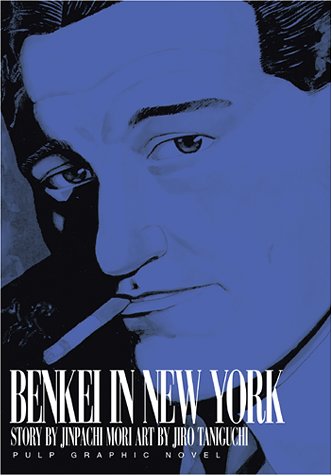
© 1996 Jinpachi MORI, PAPIER / Jiro TANIGUCHI / SHOGAKUKAN
Met with critical acclaim when it was released in the United States, Benkei in New York by Jinpachi Mori and Jiro Taniguchi is a dark, violent manga that offers a real immersion into New York in the 1990s, its style inspired by thrillers and the film noir genre. Initially pre-printed in the magazine Big Comic Original from Shogakukan between 1991 and 1995, the manga was then released in a single volume in Japan in 1996, and was not published in English until five years later. An extremely popular author in Europe with works like The Solitary Gourmet (1997) and A Distant Neighbourhood (2003), Jiro Taniguchi adapts a story written by Jinpachi Mori this time, which was inspired by the violence of the Gulf War and his fascination for the city of New York.
Born in 1958 in Nagasaki prefecture, Jinpachi Mori (1958-2015) started out as a freelancer, before specialising in the fields of law and agriculture, writing for publications including National Agricultural News. At the same time, he got into writing manga thanks to a friend who worked as editor-in-chief of a prepublication magazine.
Jiro Taniguchi (1947-2017) started out as a mangaka in the 1970s. Under the tutelage of Kazuo Kamimura, he immersed himself in gekiga and European comics, which had a strong influence on his work. In the 1980s, he struck out on his own, joining forces with various writers to produce works across different genres including crime, adventure and historical, before starting to work on more intimate pieces focused on everyday characters in the 1990s. His work became known in the West, with A Distant Neighbourhood being awarded the prize for best story at the Angoulême International Comics Festival in 2003. In 2011, he received the insignia of chevalier of the Ordre des Arts et des Lettres and in 2015, the Angoulême Festival paid homage to him with an exhibition on a scale never seen before in Europe. He passed away in 2017, leaving behind a body of work that is as prolific as it is eclectic.
An homage to hard-boiled
Benkei, a mysterious Japanese expat with a debonair appearance, moves to New York to work as a painter. However, in the shadows of the skyscrapers, he also makes a business out of revenge. Unearthing the most sordid secrets hidden by his ‘clients’, this silent character is unmatched when it comes to healing old wounds, contract after contract. He is a ‘facilitator of revenge’, cold and detached.
The different tales that make up the book are divided into seven standalone chapters, describing the killer’s modus operandi during a contract. Benkei carries out seven forms of revenge using different methods to kill his targets, usually with elements that play a role in the life of the protagonists involved. Each chapter offers an opportunity for Jiro Taniguchi to make multiple references to Hollywood cinema while retaining the characteristic aesthetic that made him a success. The mangaka’s simple, pared-down style, with clear, fine lines, gives the manga a highly cinematic quality. He approaches the narrative like a director, and revives the hard-boiled style popularised by Dashiell Hammett and Raymond Chandler that he was particularly fond of and that he explores again here with all the finesse and expertise acquired since. He translates into images a Manhattan dreamt up by Jinpachi Mori, and the result is a violent, poetic, touching piece that immerses the reader in the heart of urban darkness.
Benkei in New York (1996), a manga by Jinpachi Mori and Jiro Taniguchi published by Viz.
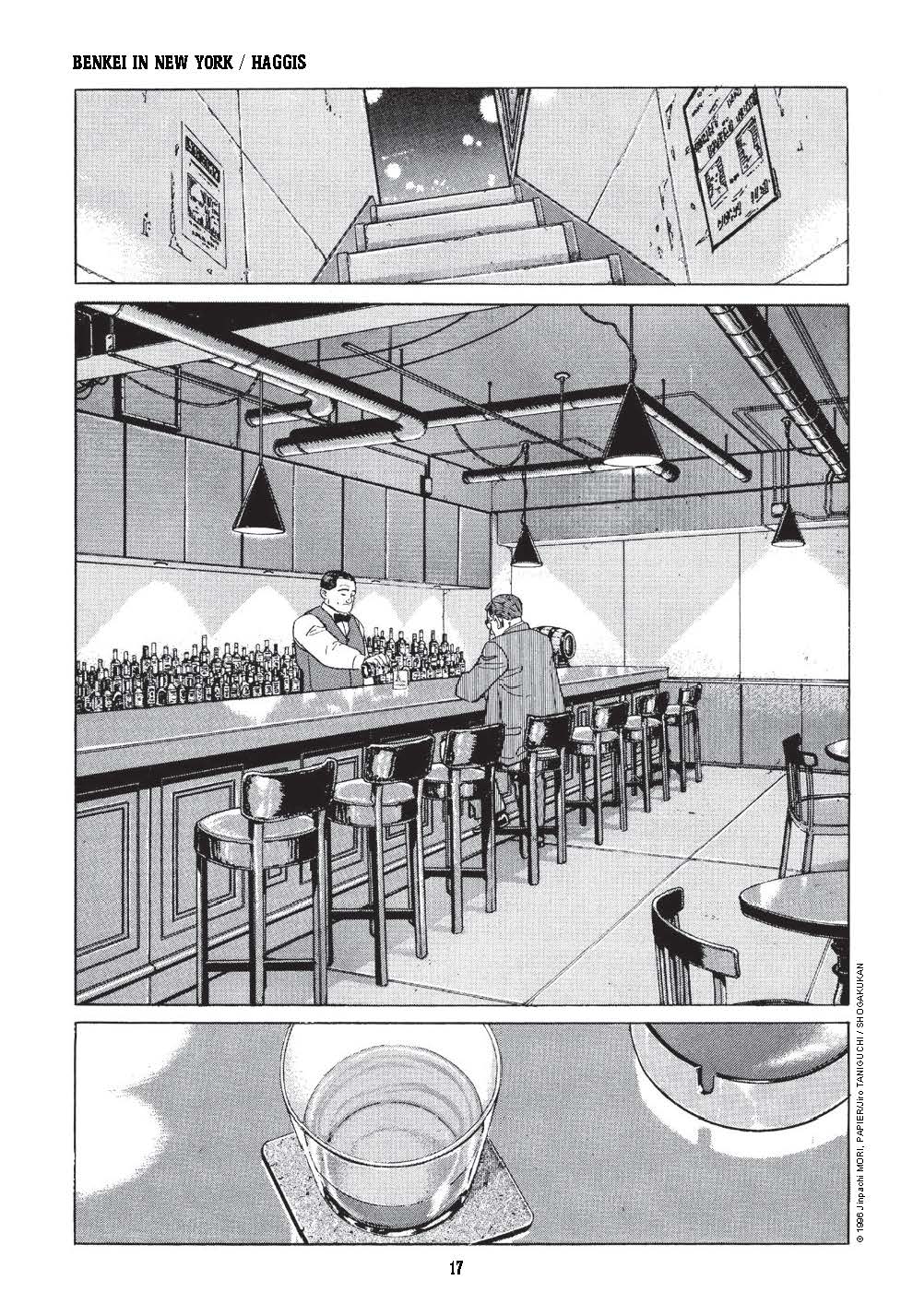
© 1996 Jinpachi MORI, PAPIER / Jiro TANIGUCHI / SHOGAKUKAN

© 1996 Jinpachi MORI, PAPIER / Jiro TANIGUCHI / SHOGAKUKAN

© 1996 Jinpachi MORI, PAPIER / Jiro TANIGUCHI / SHOGAKUKAN

© 1996 Jinpachi MORI, PAPIER / Jiro TANIGUCHI / SHOGAKUKAN
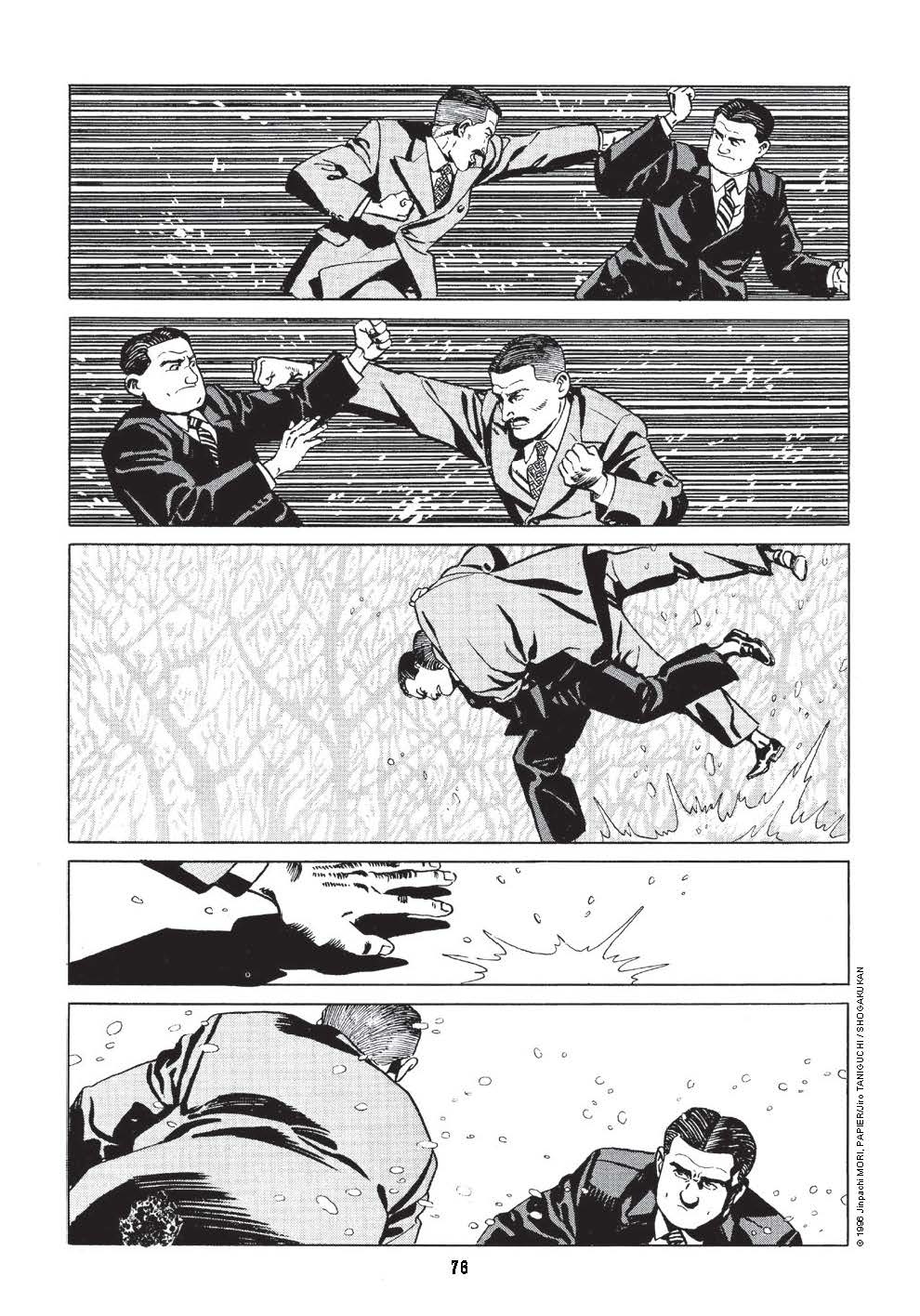
© 1996 Jinpachi MORI, PAPIER / Jiro TANIGUCHI / SHOGAKUKAN
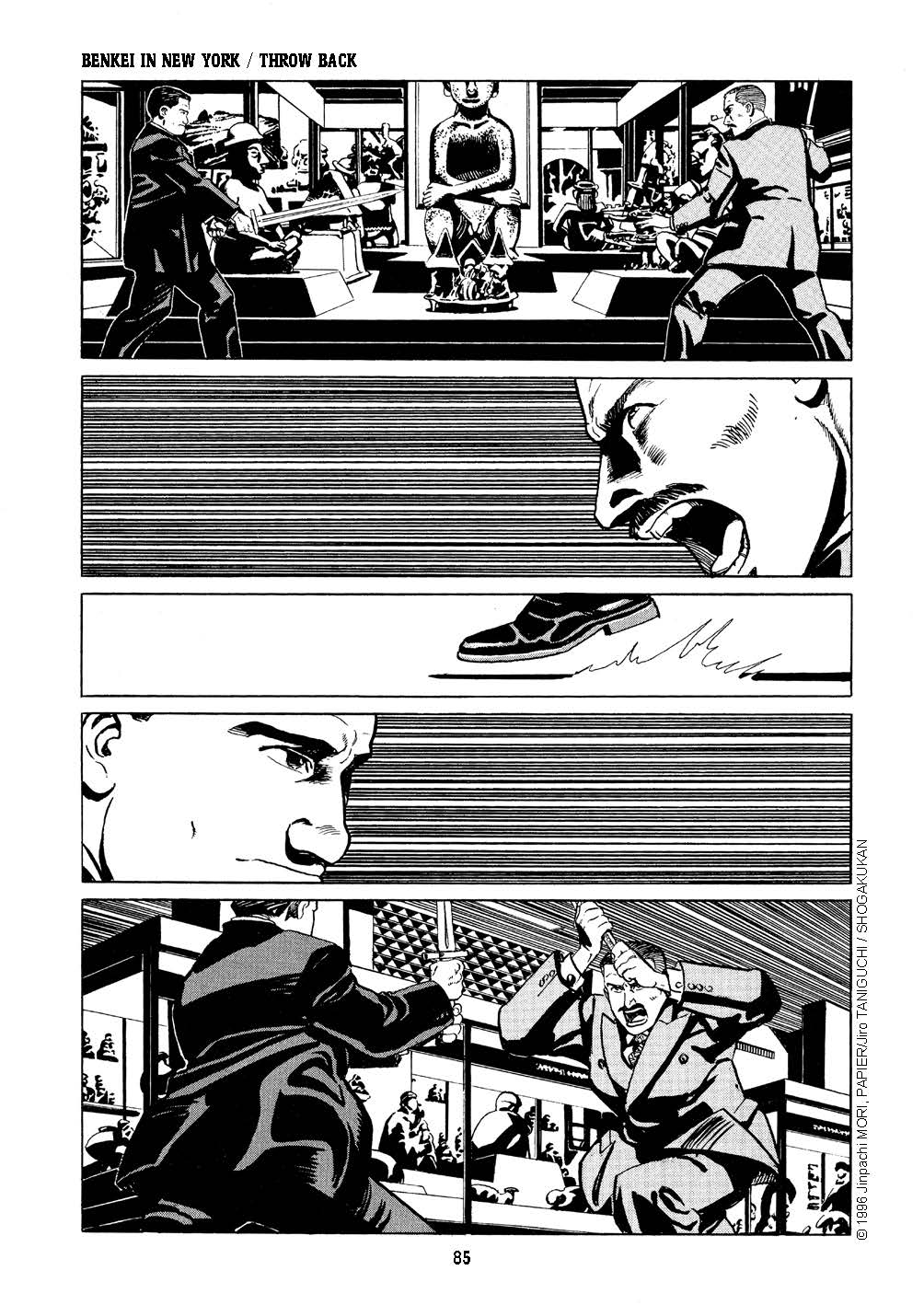
© 1996 Jinpachi MORI, PAPIER / Jiro TANIGUCHI / SHOGAKUKAN
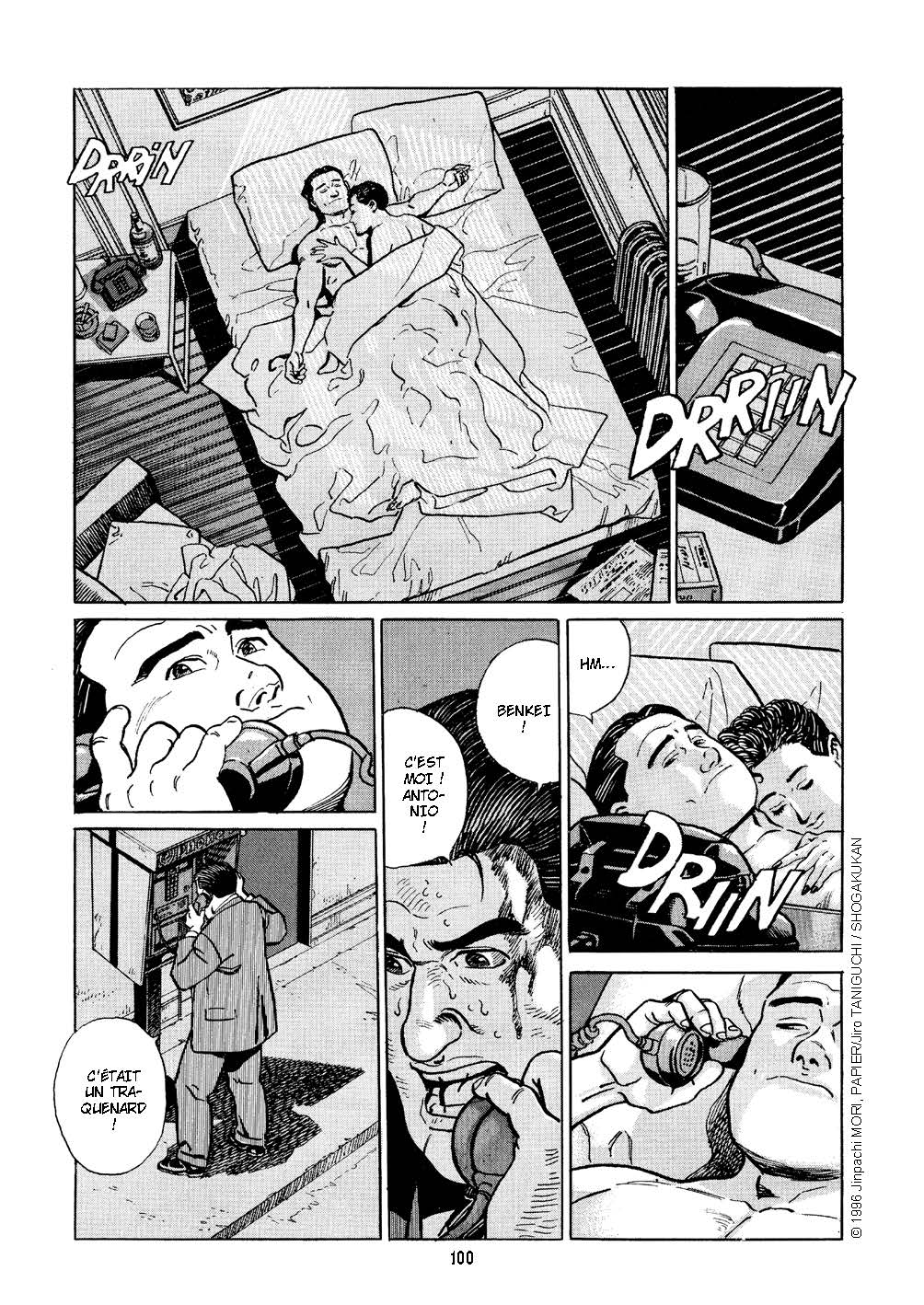
© 1996 Jinpachi MORI, PAPIER / Jiro TANIGUCHI / SHOGAKUKAN
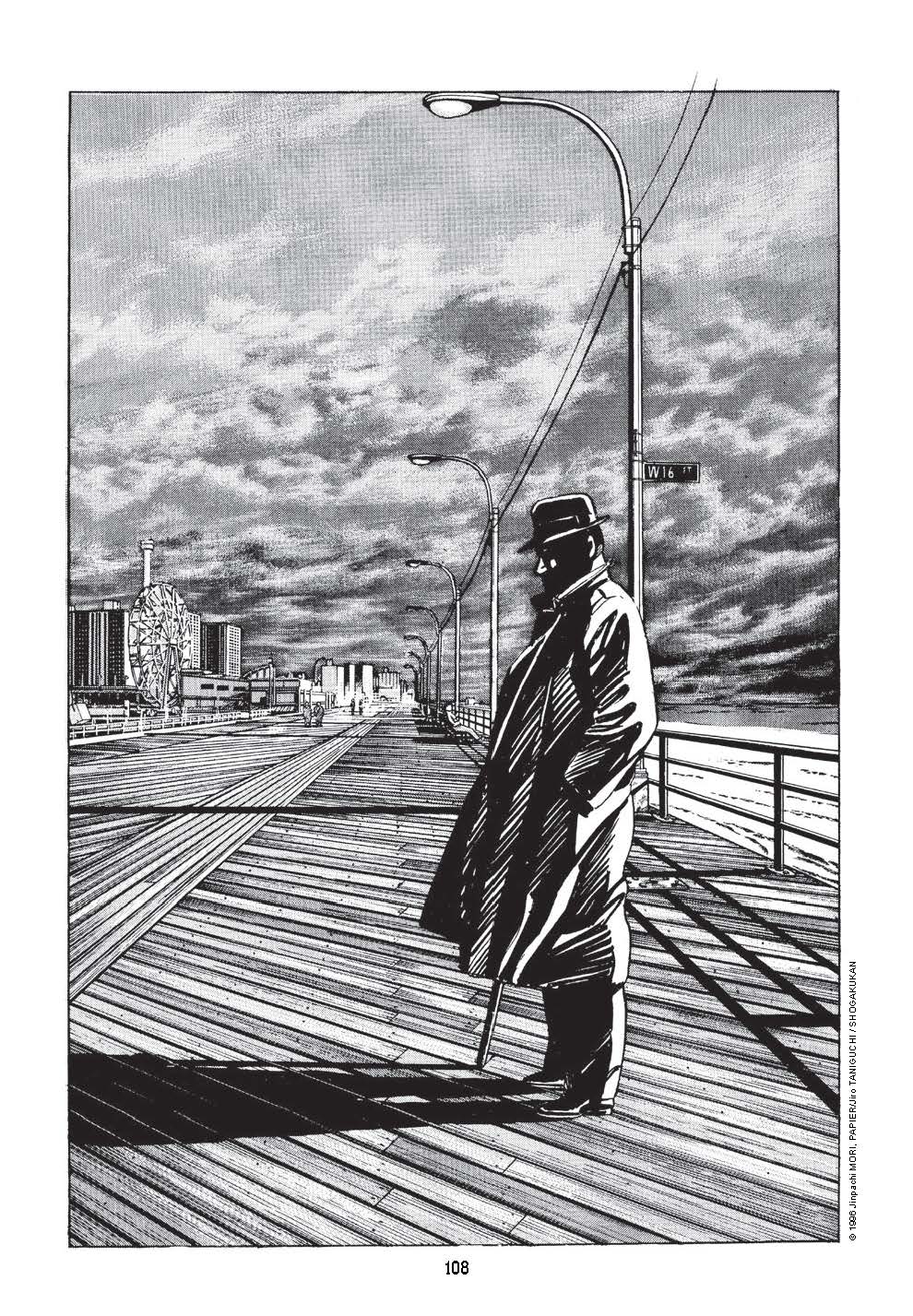
© 1996 Jinpachi MORI, PAPIER / Jiro TANIGUCHI / SHOGAKUKAN
TRENDING
-
The Tattoos that Marked the Criminals of the Edo Period
Traditional tattoos were strong signifiers; murderers had head tattoos, while theft might result in an arm tattoo.

-
Chiharu Shiota, Red Threads of the Soul
Last year, more than 660,000 people visited the retrospective 'Chiharu Shiota: The Soul Trembles' exhibit at the Mori Art Museum.

-
‘Before Doubting Others, Doubt Yourself. Who Can Truly Say a Dish Isn’t What It Used to Be?’
In ‘A Non-Conformist’s Guide to Surviving Society’, author Satoshi Ogawa shares his strategies for navigating everyday life.

-
The Story of Sada Yacco, the Geisha who Bewitched Europe
Described by Dazed magazine as the first beauty influencer, she has been restored to her former glory since 2019.

-
Ito Jakuchu's Naturalist Paintings
From 15 September until 14 October 2018, the Petit Palais showcased the artist's iconic ‘Images of the Colourful Realm of Living Beings’.





